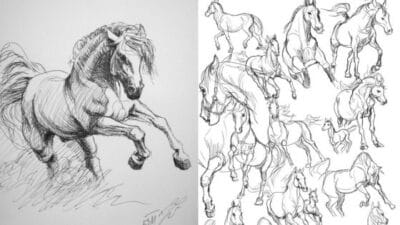Wolves represent one of nature’s most captivating subjects for artists, combining raw power with graceful beauty in ways that challenge and inspire creators at every skill level. Whether you’re drawn to their piercing eyes, flowing fur, or dynamic poses, these magnificent creatures offer endless artistic possibilities.
Learning to draw wolves effectively starts with understanding their basic anatomy and then exploring different styles, from realistic portraits to stylized interpretations that capture their wild essence. You can begin with simple sketches focusing on their distinctive features like pointed ears, elongated snouts, and expressive eyes before moving on to more complex compositions.
The versatility of wolf subjects means you can explore everything from solitary howling scenes under moonlight to pack dynamics in natural settings. Fantasy elements, cartoon styles, and realistic renderings all provide unique ways to express your artistic vision while developing fundamental drawing skills.
Key Takeaways
- Start with basic wolf anatomy and features before progressing to complex poses and detailed compositions
- Explore various artistic styles from realistic portraits to fantasy interpretations to find your preferred approach
- Focus on capturing wolves‘ expressive eyes and distinctive facial structure to create compelling artwork

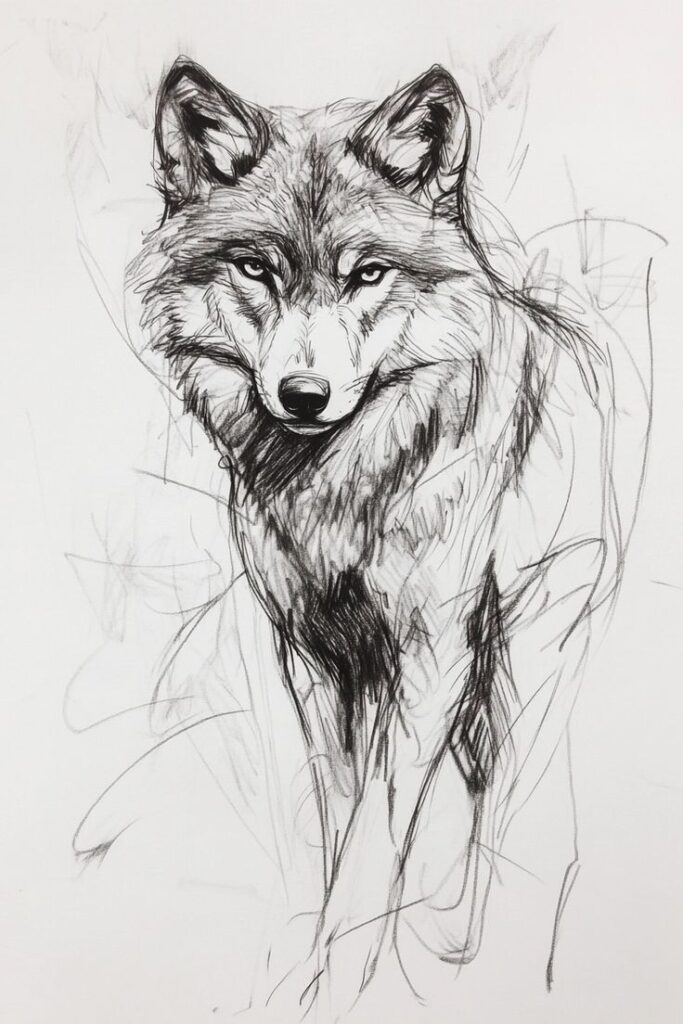
Getting Started With Wolf Drawing
Drawing wolves requires the right materials, knowledge of their anatomy, and mastering basic techniques. These fundamentals will help you create compelling wolf artwork from your first sketch.
Essential Materials and Tools
You need quality drawing pencils ranging from 2H to 6B for wolf drawing. The harder pencils work best for initial sketches and light details. Softer pencils help create dark shadows and thick fur textures.
Choose smooth drawing paper with medium tooth for beginners. Bristol board or drawing pads work well for pencil drawings. Avoid paper that’s too textured as it can interfere with fine details.
Blending tools enhance your wolf drawings:
- Blending stumps for smooth fur transitions
- Kneaded erasers for lifting highlights
- White erasers for clean corrections
- Tortillons for small detail work
Keep a reference photo nearby when drawing wolves. Good lighting on your workspace prevents eye strain during longer drawing sessions.
Understanding Wolf Anatomy
Wolf heads feature a longer muzzle than domestic dogs. The snout extends forward with a slight taper toward the nose. Their ears sit high on the skull and point upward.
Wolf eyes appear almond-shaped and sit at a slight angle. The distance between the eyes equals roughly one eye width. Wolves have broader foreheads compared to many dog breeds.
Key body proportions for drawing a wolf:
- Body length is about 1.5 times the height
- Legs appear long and lean
- Chest is deep and narrow
- Tail reaches the hock joint
Wolf fur grows in different directions across their body. The neck ruff flows backward and downward. Shoulder fur points toward the rear legs.
Basic Techniques for Drawing Wolves
Start your wolf drawing with simple shapes. Draw a circle for the head and add a triangular muzzle shape. Use ovals for the body and cylinders for legs.
Sketch lightly during the initial stages. Build up your drawing wolves gradually with darker lines as you refine the shapes. Erase construction lines once you establish the final form.
Create fur texture using short, quick strokes that follow the natural growth direction. Vary your pencil pressure to show different fur depths. Layer strokes to build darker areas.
Focus on the eyes early in your drawing process. Wolf eyes convey emotion and draw viewer attention. Add catchlights to make the eyes appear alive and alert.
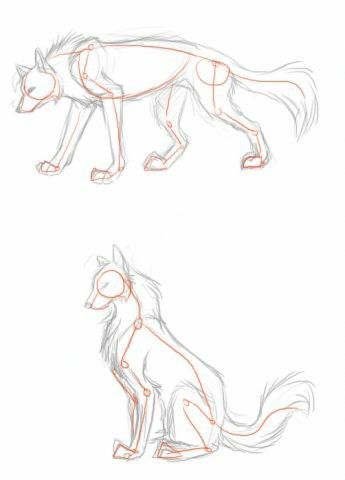
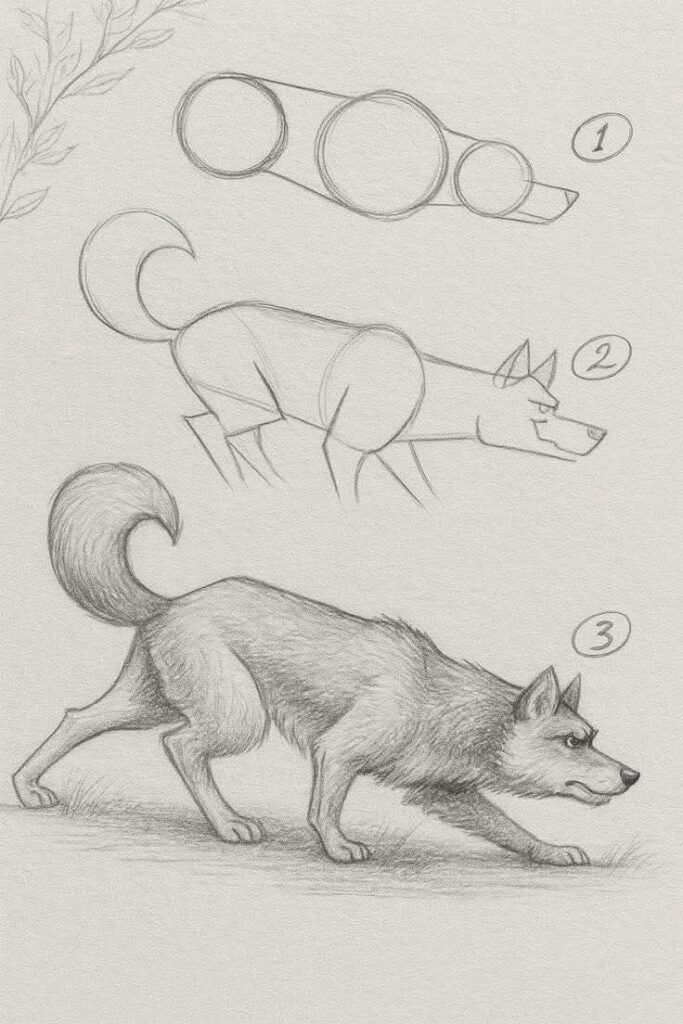
Creative Approaches to Wolf Art
Wolf art extends beyond realistic portrayals to include abstract geometric patterns, playful cartoon interpretations, and meaningful tribal designs. These diverse styles allow artists to express wolves through different cultural lenses and artistic movements.
Geometric Wolf Designs
Geometric wolf art transforms the animal’s natural form into angular shapes and clean lines. This modern approach breaks down the wolf’s features into triangles, polygons, and interconnected segments.
Start with the wolf’s head as your focal point. Map out the ears, snout, and jawline using sharp triangular shapes. The eyes work well as diamond or hexagonal forms.
Low-poly techniques create stunning visual effects. Use fewer polygons for a minimalist look or add more geometric detail for complexity. Popular color schemes include:
- Monochromatic: Black lines on white backgrounds
- Gradient fills: Blues transitioning to purples
- Metallic tones: Gold, silver, and copper accents
Digital tools make geometric wolf drawing easier, but traditional methods work too. Use rulers and templates to maintain precise angles and consistent proportions.
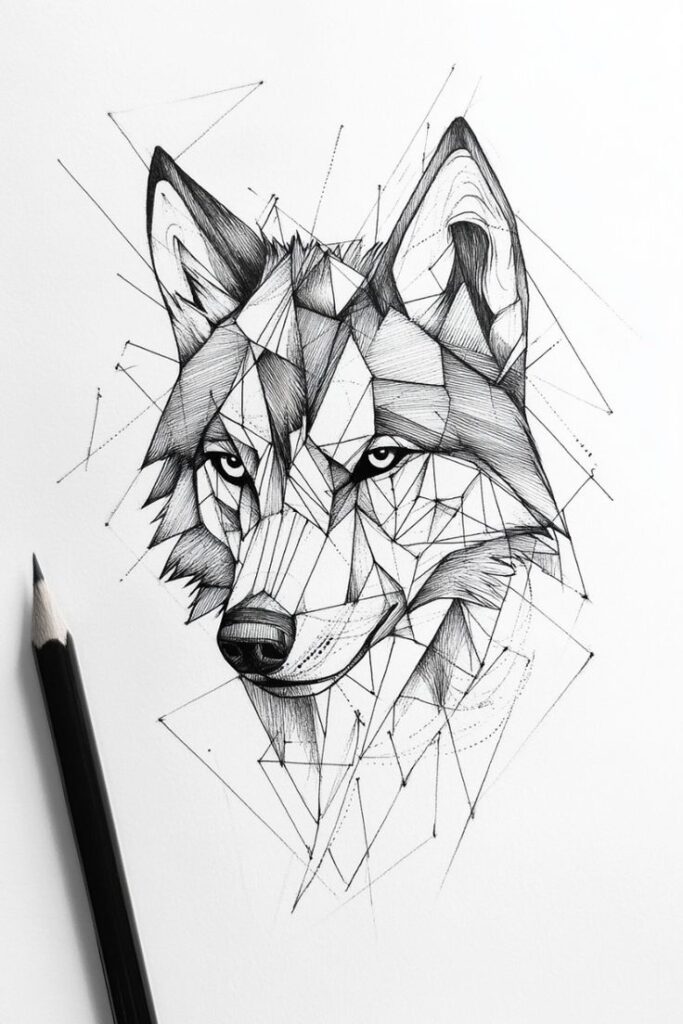
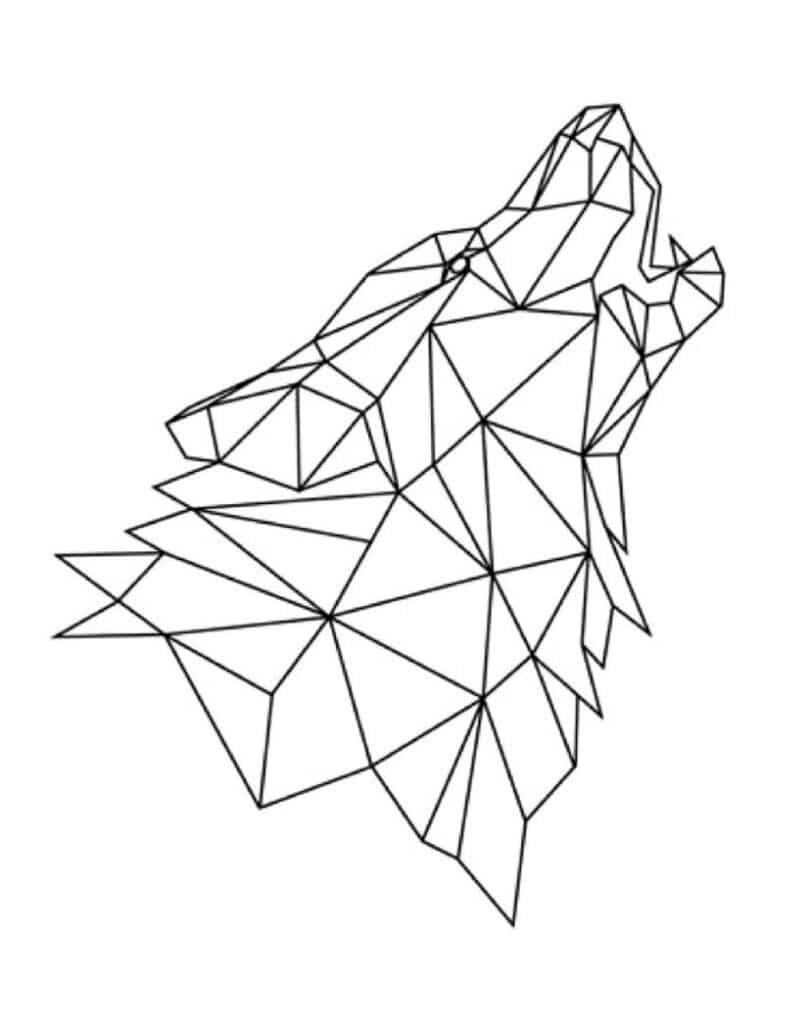
Cartoon and Cute Wolves
Cartoon wolves emphasize charm and personality over realism. Large eyes, rounded features, and expressive poses create approachable characters that appeal to all ages.
Focus on oversized heads with smaller bodies for maximum cuteness. Make the eyes at least one-third of the head size. Add sparkles or highlights to enhance their appeal.
Simplify the wolf’s anatomy. Round ears replace pointed ones, and fluffy tails become more prominent. Paws can be oversized and bean-shaped for added charm.
Expression techniques bring cartoon wolves to life:
- Tilted heads for curiosity
- Droopy ears for sadness
- Wagging tails for excitement
- Tongue hanging out for playfulness
Consider adding accessories like scarves, hats, or flower crowns. These elements transform wild wolves into friendly companions perfect for children’s illustrations or mascot designs.

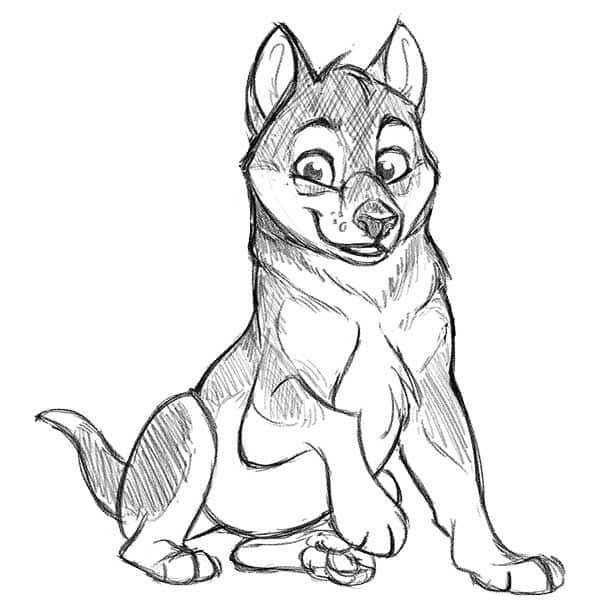
Tribal and Symbolic Wolf Art
Tribal wolf art draws from indigenous traditions and cultural symbolism. These designs incorporate sacred patterns, spiritual meanings, and ancestral art forms.
Native American influences feature prominently in this style. Traditional patterns include geometric borders, feathers, and dreamcatcher elements. Respect cultural significance when using these motifs.
Celtic wolf designs integrate knotwork and spirals. The continuous lines represent eternal cycles and spiritual connections. These intricate patterns require patience and planning.
Common symbolic elements include:
- Moon phases representing cycles
- Paw prints showing life’s journey
- Howling poses symbolizing communication
- Pack imagery emphasizing family bonds
Use bold, flowing lines to create movement and energy. Black ink works well for traditional tribal aesthetics, while earth tones add warmth and authenticity to your wolf drawing ideas.

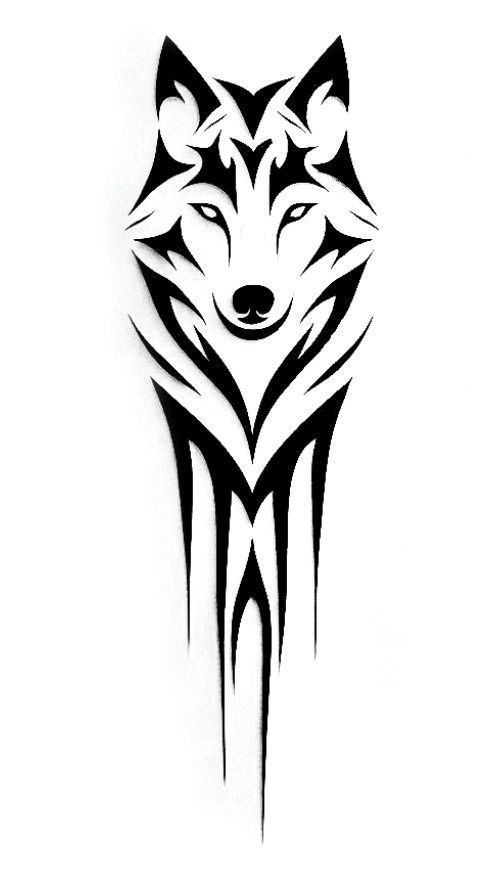
Wolf Portraits and Expressions
Wolf portraits focus on capturing the essence of these powerful animals through detailed facial features and meaningful expressions. The key elements include achieving realistic proportions, conveying leadership qualities, and mastering the intense gaze that makes wolves so captivating.
Realistic Wolf Face Drawing
Start with basic proportions by sketching an oval for the head and adding guidelines for facial features. The wolf’s muzzle extends roughly one-third the length of the entire head.
Focus on the triangular ears positioned high on the skull. They should be alert and pointed, with soft fur texture inside and out.
The nose sits at the tip of the muzzle as a distinctive heart shape. Add nostrils that angle slightly downward for authenticity.
Fur direction matters significantly in wolf drawing. Short fur covers the face while longer guard hairs frame the cheeks and jawline.
Pay attention to facial muscles and bone structure. Wolves have prominent cheekbones and a defined jaw that creates their characteristic strong appearance.
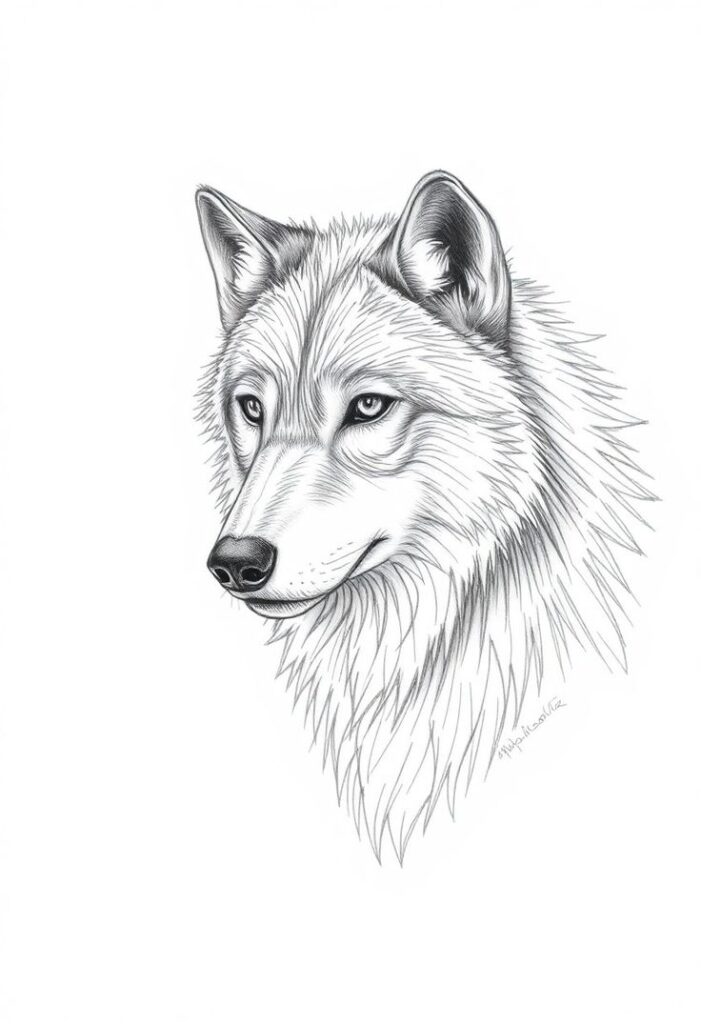
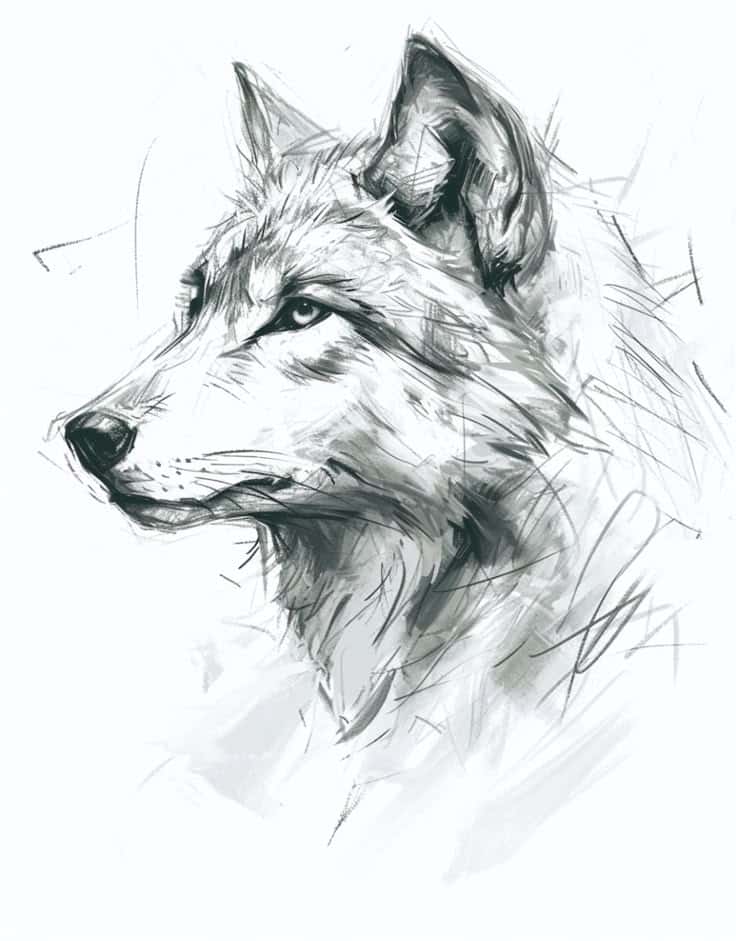
Alpha Wolf Portraits
Alpha wolves display confidence through specific facial characteristics. Their expressions show wisdom and authority that sets them apart from other pack members.
Draw the brow line slightly furrowed to create an intense, focused look. This subtle detail conveys leadership and determination.
The mouth position affects the entire expression. A slightly open mouth with visible teeth suggests controlled power rather than aggression.
Scars and weathered features add authenticity to alpha portraits. Small nicks on ears or faded marks across the muzzle tell stories of experience.
Position the head at a slight angle rather than straight-on. This three-quarter view creates more dynamic composition and natural leadership presence.


Expressive Eyes and Gaze
Wolf eyes are the most critical element in conveying emotion and personality. They typically appear amber, yellow, or light brown with intense depth.
Shape the eyes as slightly almond-shaped rather than perfectly round. This creates the characteristic wild appearance that distinguishes wolves from domestic dogs.
The iris should fill most of the visible eye space. Leave small highlights to show life and awareness in your wolf drawing.
Eyebrow positioning dramatically changes expression. Raised brows suggest curiosity while lowered brows create intensity or concentration.
Pupils dilate based on lighting and emotion. Larger pupils often convey alertness or excitement in your drawing a wolf portrait.
Nature and Fantasy-Inspired Wolf Drawings
Nature and fantasy elements transform wolf art into captivating mystical scenes. These artistic approaches blend wolves with dreamlike landscapes, spiritual symbols, and otherworldly themes.
Wolves in Mystical Landscapes
Forest enchantment creates powerful wolf drawings by combining wolves with magical woodland settings. You can draw wolves among ancient trees with glowing mushrooms or floating orbs of light.
Mountain mystique works well when you place wolves on cliff edges under starlit skies. Add aurora borealis colors or swirling cosmic patterns in the background for dramatic effect.
Moon phases enhance your artistic journey by incorporating different lunar cycles. Draw wolves howling at crescent moons, full moons, or blood moons with ethereal lighting effects.
Seasonal magic brings depth to wolf art through mystical weather elements. You can include falling snow that sparkles like stardust or autumn leaves that glow with inner light.
Water elements add tranquility to your wolf drawing ideas. Consider wolves drinking from crystal-clear pools that reflect other dimensions or walking across misty lakes.
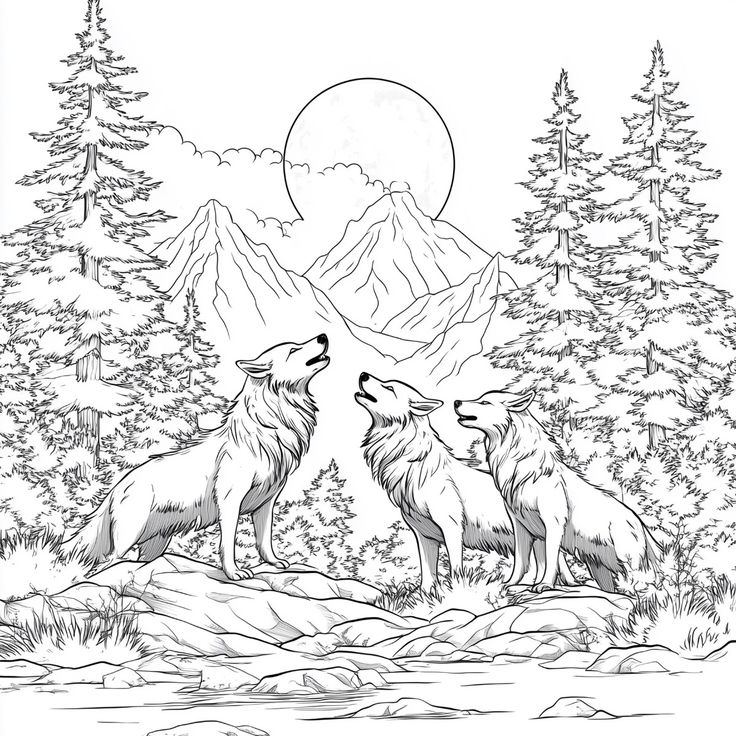
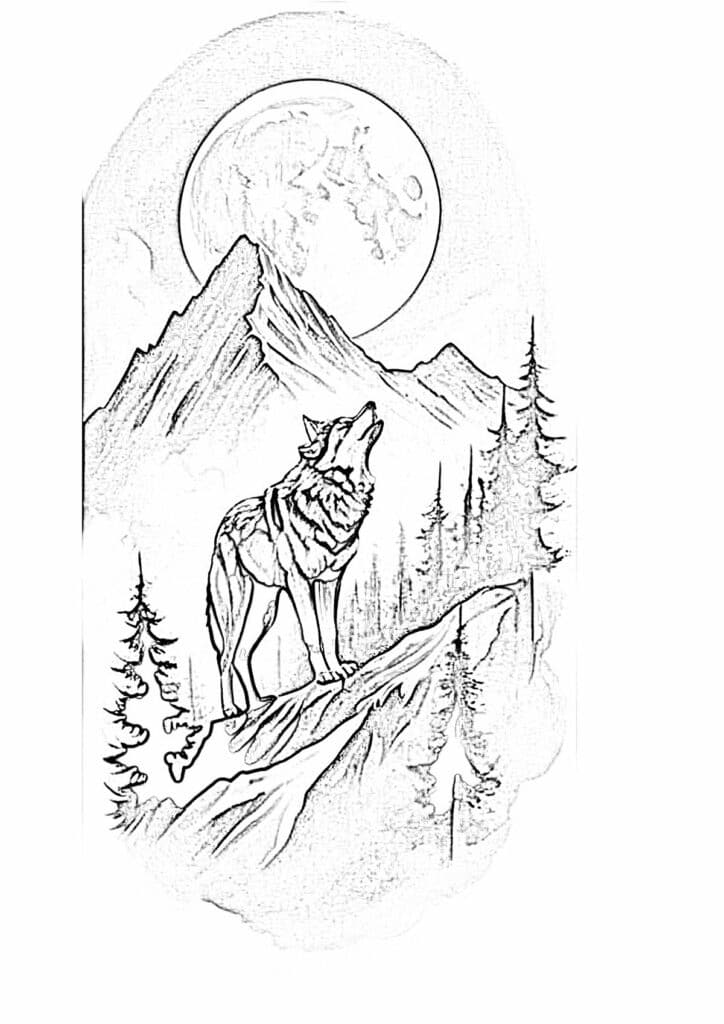
Wolves With Dreamcatchers
Traditional placement involves positioning dreamcatchers above or behind wolves in your compositions. The circular frames create natural focal points that complement the wolf’s form.
Integrated designs work when you weave dreamcatcher elements directly into the wolf’s fur patterns. Draw feathers flowing from the wolf’s coat or beads scattered throughout the design.
Cultural respect matters when creating these pieces. Research authentic dreamcatcher patterns and avoid stereotypical representations in your wolf art.
Color harmony connects wolves and dreamcatchers through shared color palettes. Earth tones like browns, tans, and deep blues create cohesive mystical artwork.
Symbolic meaning adds depth by incorporating meaningful elements. Feathers represent freedom while web patterns symbolize protection and filtering of dreams.
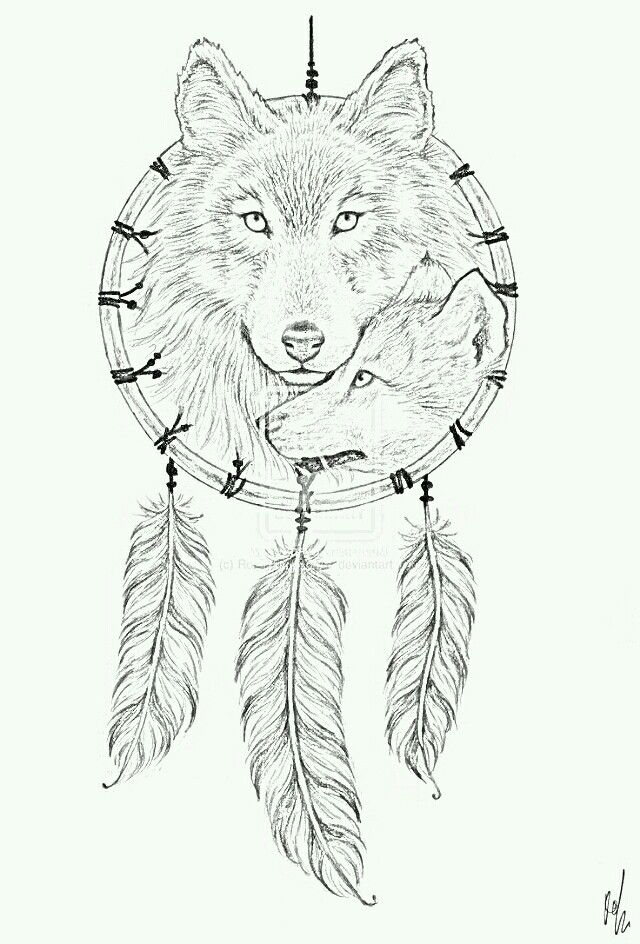
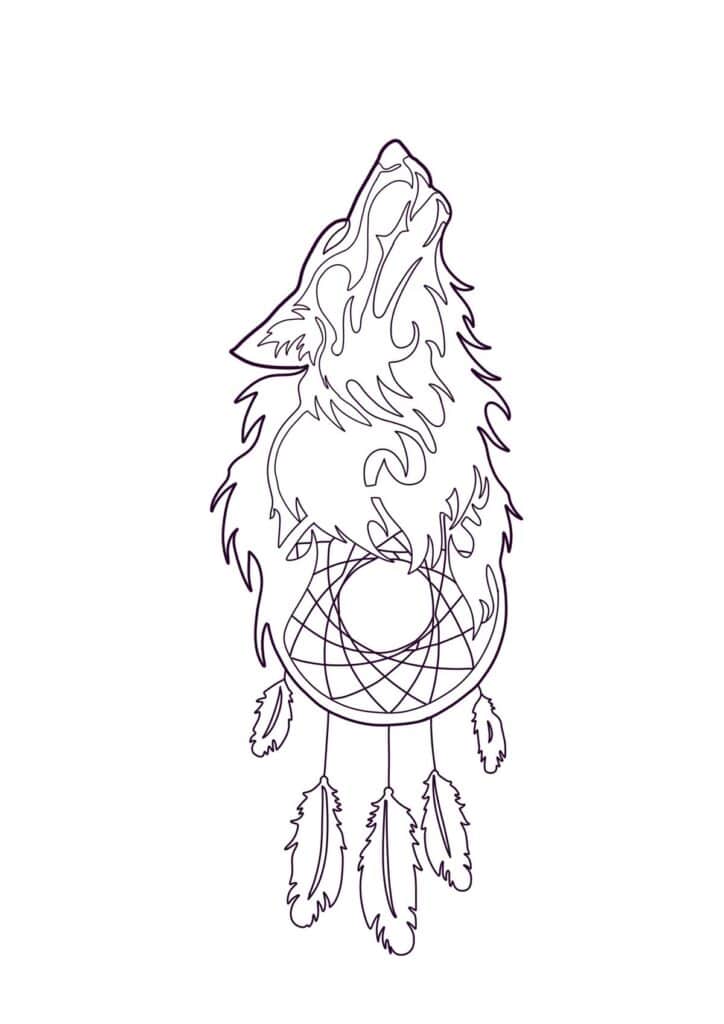
Wolf and Spirit Animal Illustrations
Ethereal qualities define spirit animal wolf drawings through transparent effects and glowing outlines. You can create wolves that appear to fade in and out of visibility.
Energy visualization shows spiritual connection through flowing lines or auras around your wolves. Draw swirling energy patterns that extend from the wolf’s body into the surrounding space.
Transformation themes capture the mystical nature of spirit animals. Your wolf drawing ideas can show wolves shifting between physical and spiritual forms.
Meditation poses work well for peaceful spirit wolf art. Draw wolves in calm, seated positions with closed eyes and serene expressions.
Connection symbols like light beams or star patterns link wolves to the spiritual realm. These elements guide viewers’ eyes and reinforce the mystical theme.
- 400shares
- Facebook0
- Pinterest400
- Twitter0

